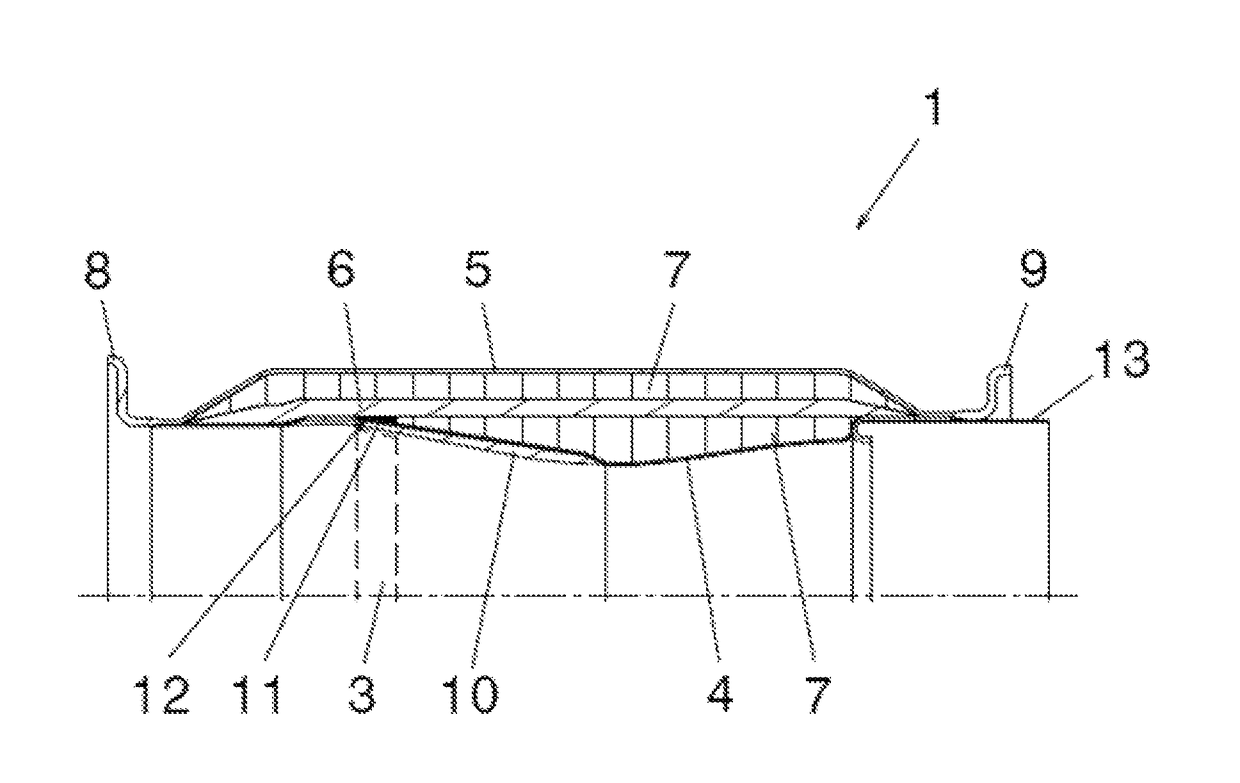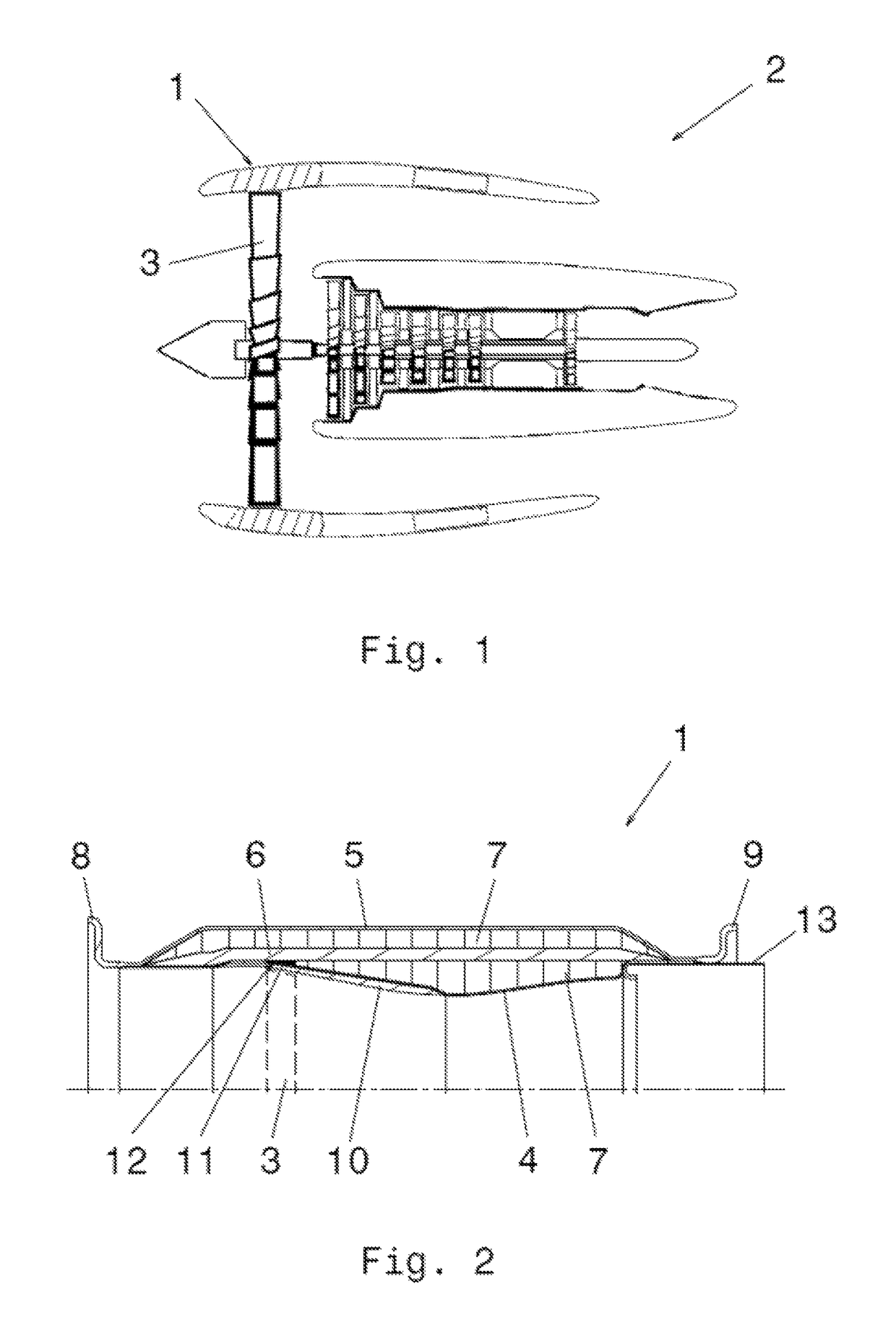Fan case for an aircraft engine
a technology for aircraft engines and fan cases, which is applied in the direction of machines/engines, liquid fuel engines, combustion air/fuel air treatment, etc., can solve the problems of low safety in case of damage, low cost, and low weight of fiber-reinforced plastics, so as to ensure safe landing and sufficient stability of aircraft engines
- Summary
- Abstract
- Description
- Claims
- Application Information
AI Technical Summary
Benefits of technology
Problems solved by technology
Method used
Image
Examples
Embodiment Construction
[0024]FIG. 1 illustrates an aircraft engine 2, partially in section, in an arrangement having a fan case 1 disposed in the region of the fan 3. Typically, a fan case 1 consists of a cylindrical jacket having fastening flanges and possible strengthening ribs or the like integrated therein and / or attached thereto. The fan case 1 is connected to the remaining engine housing, which is again arranged on corresponding fastening elements, usually wings.
[0025]FIG. 2 shows a part of a fan case 1 designed according to the invention, illustrated in section. The fan case 1 includes an inner layer 4 designed according to the aerodynamic requirements of the aircraft engine 2 and an outer layer 5 as well as a reinforcement ply 6 disposed between the inner layer 4 and the outer layer 5, and deformation layers 7 disposed on both sides of the reinforcement ply 6. Depending on the aircraft engine 2, the reinforcement ply 6 is formed by at least 20 plies of a glass fiber-reinforced plastic and is mainl...
PUM
| Property | Measurement | Unit |
|---|---|---|
| strength | aaaaa | aaaaa |
| abrasive | aaaaa | aaaaa |
| ductility | aaaaa | aaaaa |
Abstract
Description
Claims
Application Information
 Login to View More
Login to View More - R&D
- Intellectual Property
- Life Sciences
- Materials
- Tech Scout
- Unparalleled Data Quality
- Higher Quality Content
- 60% Fewer Hallucinations
Browse by: Latest US Patents, China's latest patents, Technical Efficacy Thesaurus, Application Domain, Technology Topic, Popular Technical Reports.
© 2025 PatSnap. All rights reserved.Legal|Privacy policy|Modern Slavery Act Transparency Statement|Sitemap|About US| Contact US: help@patsnap.com


